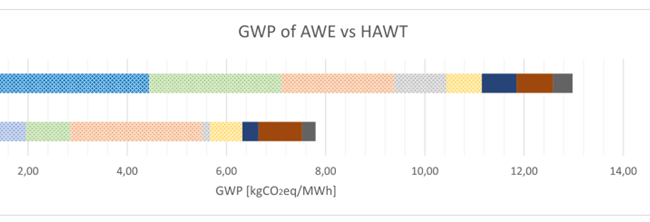Public Acceptability
Coordinator
- Airborne Wind Europe (Stefanie Thoms) thoms@airbornewindeurope.org)
- TU Delft (Helena Schmidt) h.s.schmidt@tudelft.nl
- Paul Scherrer Institute (Karin Treyer) karin.tryer@psi.ch
Topics and objectives
Question to be answered: What are AWE benefits for and impacts on society and the environment?
This WP will ideally also involve non-technical expertise like social sciences in order to investigate how neighbors and society perceive AWE.
The following topics will be potentially covered:
- Site selection: What are key features that AWE sites should fulfill? Which sites already developed for conventional wind could be used for AWE?
- Local perceptions regarding visual impacts and safety aspects: How will neighboring communities perceive AWE?
- Noise emissions: How should noise emissions be measured? How can noise be reduced?
- Impacts on birds, bats, and other fauna including marine habitats in case of offshore
- Participation of local communities in AWE projects: How can it be ensured that local communities can participate and benefit also financially from AWE projects? What differences may there exist to other renewable energy projects?
- Life-Cycle Analysis (LCA): What are the carbon and environmental footprint of AWE compared to other energy technologies? How can it be further reduced? Which components and materials have the highest impact?
- Circular Economy: How can AWE systems be designed to reduce material consumption through repairability, reuse, and recycling? Synergies with Tasks 28 (Social Acceptance) and Task 34 (Working Together to Resolve Environmental Effects of Wind Energy) will be sought. It will be discussed if it is preferential to include AWE aspects in these Tasks instead of taking up all social and environmental issues in the AWE Task.
Deliverables
- D4.1 LCA for AWE and conclusions
- D4.2 Repository of surveys and studies on social acceptance and impacts on birds/bats
- D4.3 Guidelines for site selection, noise measurement, and environmental impact mitigation measures
- D4.4 Circular economy / cradle-to-cradle aspects for AWE, incl. design process
Progress and Achievements
Social Acceptance
In WP4 on social acceptance, a literature review assessed the current state of knowledge on the social acceptance of AWE. A systematic literature search led to the identification of 40 relevant publications that were reviewed.
An interview-based survey study was conducted among residents living around SkySails Power’s AWE test site in Northern Germany. 55 residents living up to 2.5 km from the site were recruited through letters, calls, leaflets in mailboxes, a newspaper article and announcements by local organizations. Structured, in-person interviews took place in the participants’ homes. The journal manuscript discussing the results of the study is currently in preparation.
TU Delft, 2022: Social Acceptance of Airborne Wind Energy
Life Cycle Assesment
Within the WP4 sub-group on Life Cycle Analysis, based on a Master Thesis at TU Delft and elaborated under the MegaAWE project, a paper on the Life Cycle Analysis of a fixed-wing AWE system was finalized. Further LCA have been initiated.

LCA Analysis: Global Warming Potential of an AWE system compared to a Horizontal Axis Wind Turbine (HAWT) system. Source: v. Hagen, AWEurope et al. 2021/2022.
- Available LCAs on AWE:
- Wilhelm, S. 2018. LCA of electricity production from AWE. Book Chapter in: Airborne Wind Energy, pp 727-750, Schmehl, R. (ed.). Green Energy Technol 0:727–750. https://doi.org/10.1007/978-981-10-1947-0_30
- Van Hagen, Luuk. 2021. Life Cycle Assessment of Multi-Megawatt Airborne Wind Energy. Master thesis, Delft University of Technology. https://doi.org/10.13140/RG.2.2.11307.77604
- Bauer, F. 2019. Which Energy Technology has the Lowest CO2-Footprint? https://medium.com/kitekraft/which-energy-technology-has-the-lowest-co2-footprint-8dd55ba590a3
- Several LCAs on AWE forthcoming:
- Paul-Scherrer Institute / ETH Zurich
- Politecnico Milano
- Technical University of Berlin
- Technical University of Munich
